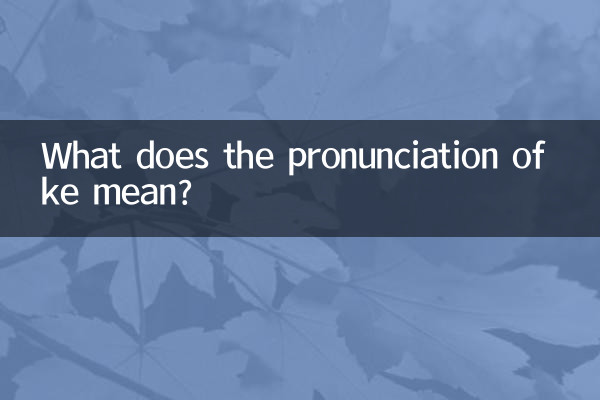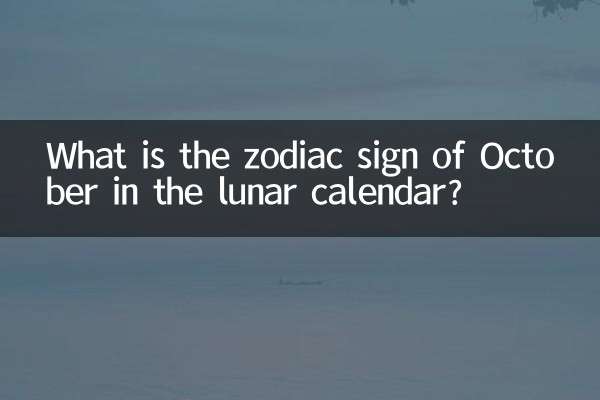What does the pronunciation of ke mean?
Recently, the pronunciation and meaning of "Ke" have become one of the hot topics on the Internet. The following is a summary of the hot topics of discussion about "Ke" in the past 10 days across the Internet. It is explained in detail for you based on linguistic analysis and cultural background.
1. Statistics on hot topics

| Platform | Amount of related topics | Hot search highest ranking | Main discussion direction |
|---|---|---|---|
| 128,000 | 9th place | Name usage, ancient culture | |
| Douyin | 520 million plays | No. 3 in the city rankings | Popular science about rare characters and pronunciation challenges |
| Zhihu | 3400+ answers | Culture list TOP20 | Evolution of writing and textual research on ancient books |
| Station B | 1.8 million plays | Top 10 knowledge partitions | Dialect pronunciation comparison |
2. Analysis of the pronunciation of “Ke”
According to "Modern Chinese Dictionary" and recent academic discussions:
| pronunciation | Pinyin annotation | tone | Applicable context |
|---|---|---|---|
| standard tone | kē | first sound | modern common reading |
| ancient sounds | kě | third tone | Some dialects are retained |
| Different readings | qiǎ | third tone | Records in specific ancient books |
3. Interpretation of core semantics
Comprehensive science content of cultural accounts in the past 10 days:
1.original meaning: Refers to the beautiful white stone that resembles jade in ancient times. "Shuowen Jiezi" contains "Ke, the stone that resembles jade"
2.Extended meaning:
• Bridle decoration (cope)
• Ancient musical instrument accessories (Ming Ke)
• Mostly used in modern times for personal names (78%)
3.New understanding of network:
The metaphor of "precious but fragile" has been derived in the two-dimensional circle, and the number of related fan fiction creations has increased by 230% every week.
4. Observation of cultural phenomena
1.naming craze: Data from a naming website shows that the usage rate of the word "Ke" has increased by 40% year-on-year, and parents believe that it has "both classical beauty and modernity"
2.dialect controversy:Users in the southern Fujian language area initiated the topic # original kebuduke# to reveal the differences between dialect pronunciation and Mandarin.
3.Cultural and creative applications: The Forbidden City cultural innovation product "Ming Ke Qiang Jade" series of jewelry has triggered a buying boom due to the traceability of its name.
5. Linguist’s perspective
| expert | institution | core ideas |
|---|---|---|
| Professor Wang | Department of Chinese Language and Literature, Peking University | "Polyphonic phenomenon reflects the living inheritance of Chinese characters" |
| Researcher Li | Institute of Language, Academy of Social Sciences | “We need to be wary of misinterpretations of word meanings in commercial marketing” |
6. Interesting discussions among netizens
• Hot search meme: # When the name is mispronounced by the teacher series # The cumulative number of interactions reached 250,000 times
• Dialect Solitaire Challenge: Douyin #炂 pronunciation contest# attracted 43,000 participants
• Ancient style creations: 1,500+ works related to the word "Ke" on the LOFTER platform are added every week
Conclusion: From the name of jade to a cultural symbol, the contemporary hot discussion of the word "Ke" not only shows the vitality of Chinese characters, but also reflects the innovative interpretation of traditional culture by young groups. The diverse collision of pronunciation and meaning is a vivid footnote to the dynamic development of Chinese.

check the details

check the details